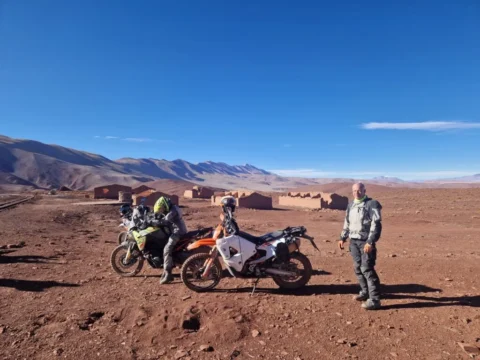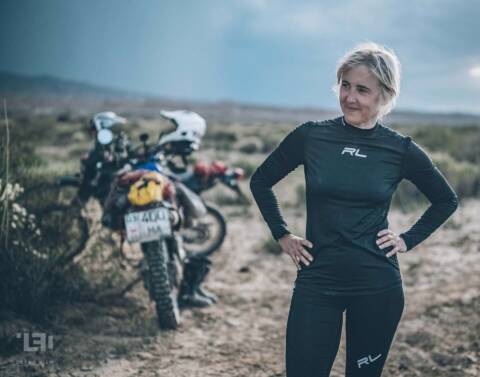How to Avoid Over Packing for a Motorcycle Journey
Packing for a motorcycle journey seems to be one of the hottest topics out there. How and how much you pack is entirely up to you, depending on what motorcycle you’re riding, where, and for how long. However, there are some basic guidelines that can help, especially if it’s your first long motorcycle trip.
We have already posted a a comprehensive packing list for those of you who are setting out for an epic adventure. But more often than not, it’s not what you pack – it’s how you pack.
The “what” is very individual: some people are happy with nothing but a tool roll, two T shirts, a sleeping bag, and some duct tape. Others pack everything they can stuff in their panniers, from camping chairs to hair dryers. Neither version is wrong, as we all need different things and different comforts when we’re on the road.
The “how”, on the other hand, is universal. Pack smarter, and you won’t have to pack less. To help you out, we’ve compiled a list of tips and hacks that will make packing for a motorcycle journey much easier.
Size Matters
No, not the size of your stuff: the size of your panniers. Here’s a simple fact: if you get the biggest panniers and duffel bags that you can, you will fill them. Instead, opt for medium-sized luggage, and you simply won’t be able to stuff it too much. If you’re opting for soft luggage, go for 25-liter panniers and a 30-35 liter duffel bag instead of 45 liter saddle bags and a humongous duffel or top box. If it’s aluminium panniers, opt for smaller, narrower boxes. Not only you’ll pack less, but you’ll also be shaving weight off your already heavy bike.

Smaller panniers, less packing!
Saving Space
Now that your luggage is ready, make sure that you save as much space as you can. This can be done in two ways: first, buy items that are smaller, and second, use compression bags and Velcro straps to minimize bulk.
Not all of your items can be shrunk, of course, but before you even draw up a packing list, see what you can buy or replace with a smaller, lighter version. For example, carry a notebook or tablet instead of a large laptop; buy camping gear that packs tiny, like the incredibly light Big Agnes tents, sleeping bags, and sleeping pads. When it comes to your clothes, get thin merino wool layers instead of bulky jumpers; forget hoodies, think thermal base layers. Heavy, bulky denim can be replaced with lightweight, easy-to-wash walking pants; sturdy army-style boots may be great for hiking, but trust us, a pair of light tennis or running shoes will do just fine.
The second part is all about the art of minimizing bulk. Get a few compression bags to make your camping gear and clothes smaller. Using Velcro straps, squeeze bulkier bundles into more compact ones. Use packing cubes to save both space and your own sanity: if everything is neatly sorted into packing cubes, you won’t have to rummage in the bottom of your panniers for that light rain jacket you need right now.

Packing cubes save space and minimize chaos. Image: Pixabay
Indoors vs Outdoors
Here’s a fun fact: not all of your stuff needs to be packed into the panniers, top box or duffel bag, or your tank bag. Some items, such as tent poles, some spare parts, and tool rolls, can happily live elsewhere on the bike. For example, you can strap the tent poles across your handlebars, pack tire tubes into a small bag on the front fender, zip tie tire irons under your luggage rack, and pack your tools away in a DIY toolbox on the crash bars or in front of the skid plate. Remember, you need to keep the weight low, so keep the heavier items lower on your bike and don’t make the rookie mistake of piling heavier stuff in and on top of your top box or duffel bag. Be creative and see what you can pack away on the bike itself, again keeping the weight low.
Multifunctional Gear
Another packing tip is to try and focus on multifunctional gear and tools. For example, pants that zip down to shorts and a rain jacket with an inner liner will save space as they double in function. Similarly, get modular multitools such as the RRR Solutions kit, see if your hydrapak or a bundle of clothes can work as a camping pillow, and minimize the bulk of your electronics by carrying SD cards instead of hard drives and one global adapter instead of several different ones for different continents or countries.
If you pack smarter, you can actually take more items with you without overpacking and over-loading your motorcycle. Smaller panniers, smaller camping gear and clothing items, compression bags and packing cubes, as well as using multifunctional gear are all great ways to avoid overpacking for a motorcycle journey. Have we missed anything? Let us know in the comments below!




